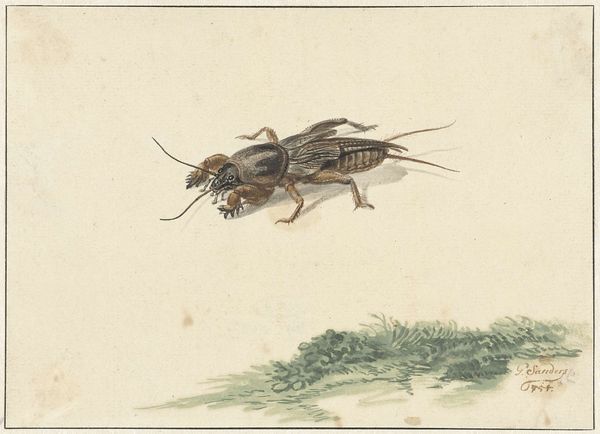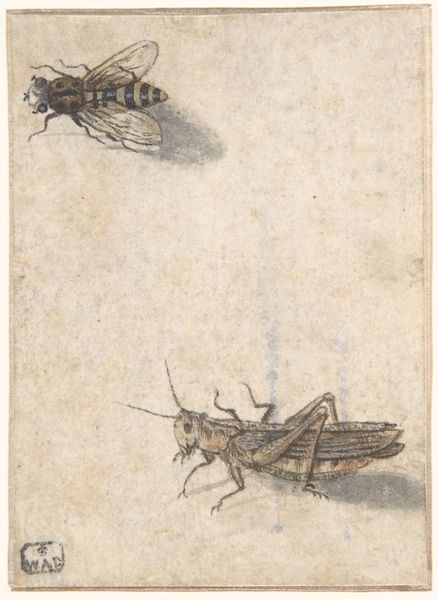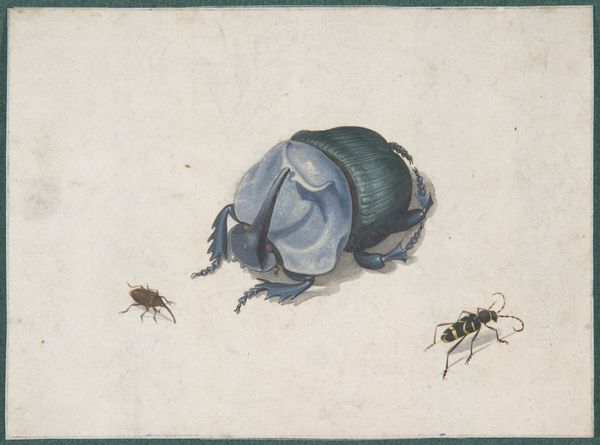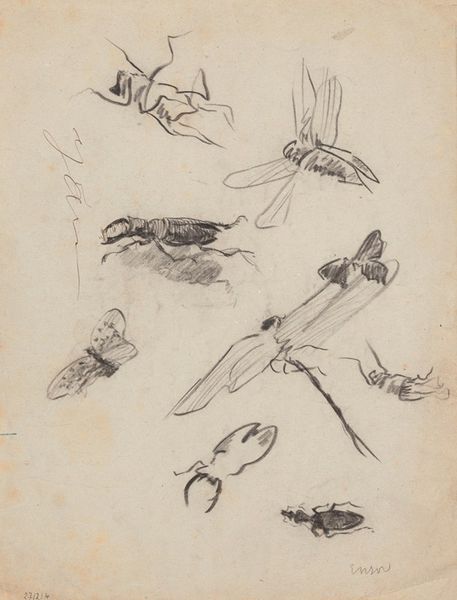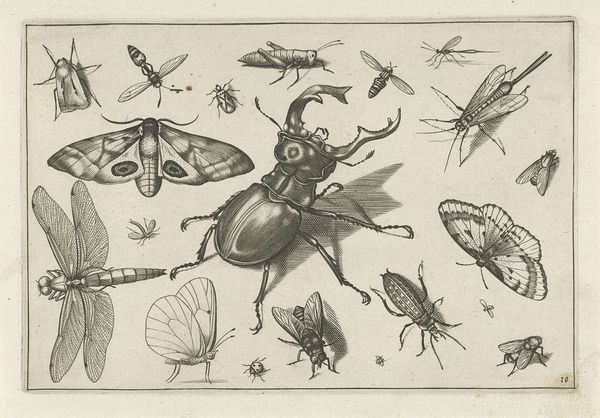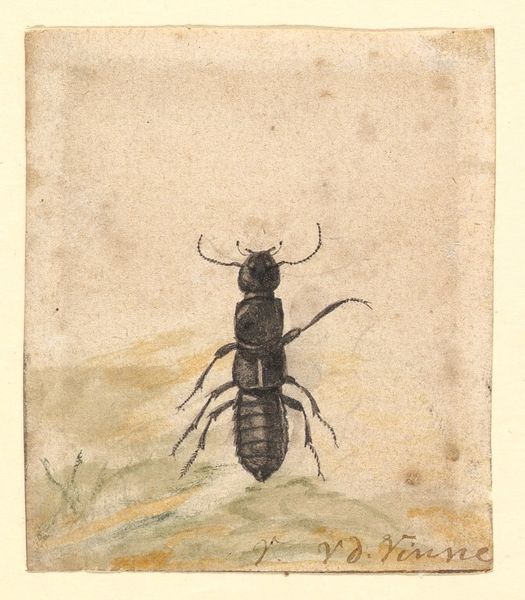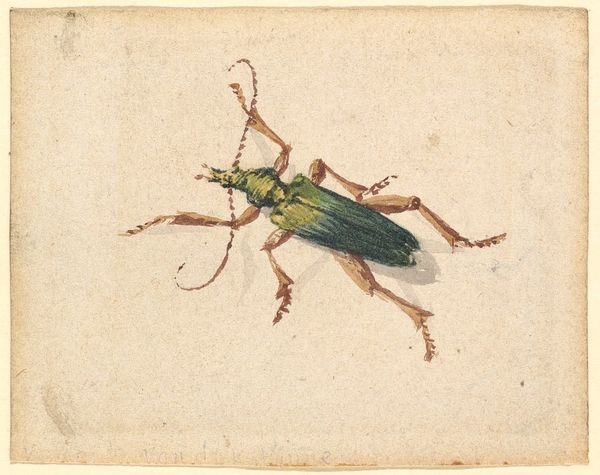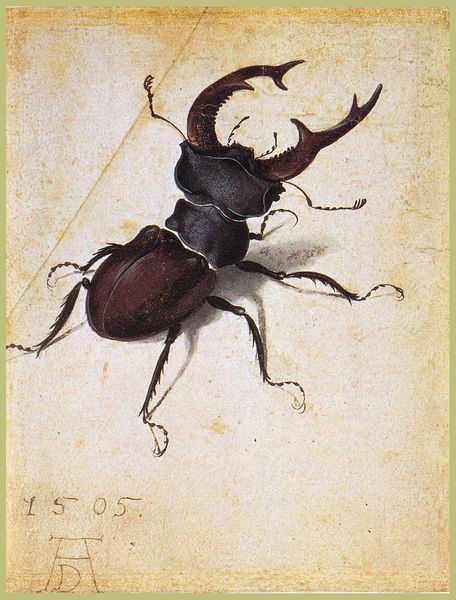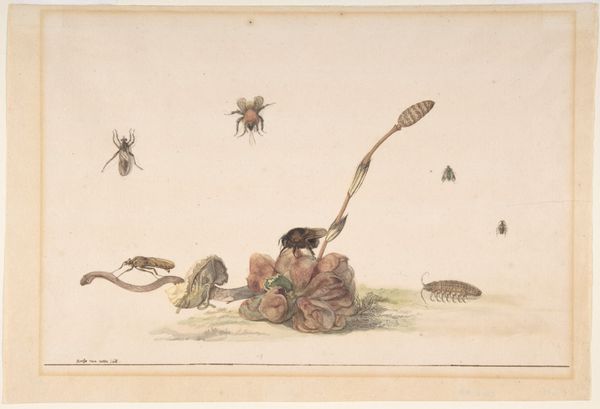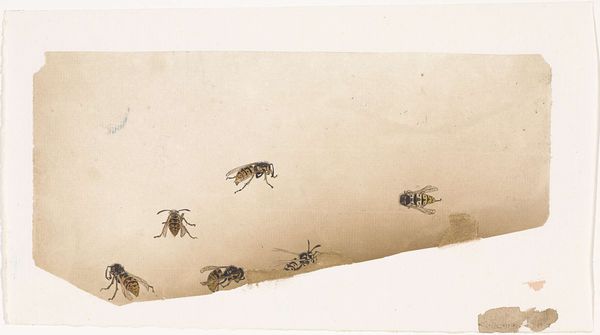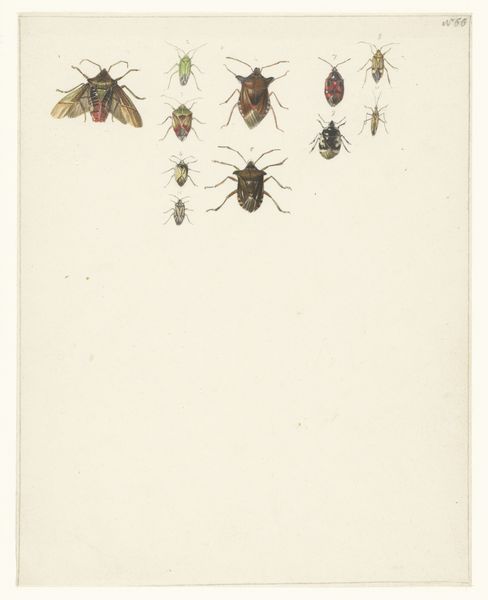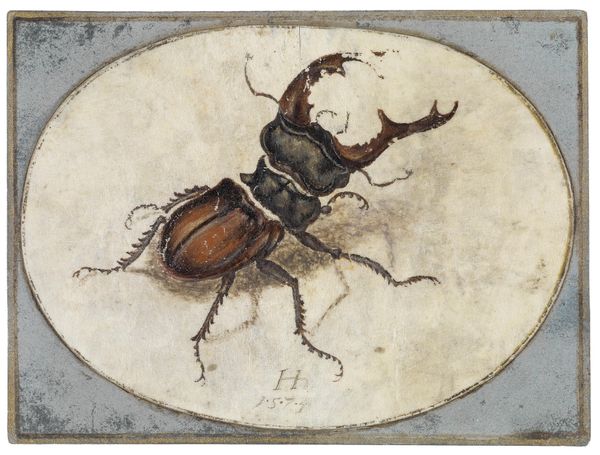
drawing, coloured-pencil
#
drawing
#
coloured-pencil
#
coloured pencil
#
watercolor
Dimensions: sheet: 3 5/16 x 2 5/16 in. (8.4 x 5.9 cm)
Copyright: Public Domain
Curator: What immediately strikes me is the contrast between the delicacy of the drawing and the somewhat grotesque detail of the insects. Editor: I find myself drawn to this piece—believed to be from between 1600 and 1700 and presented courtesy of the Metropolitan Museum of Art—titled “A Bumble Bee and a Fulgoroid”. The use of coloured pencil creates a wonderfully tangible feel, don't you think? How do you see the piece in the context of its period? Curator: Certainly, we see echoes of the scientific illustrations that were becoming increasingly popular during that period, especially with the rise of natural history. Yet, these insects, divorced from any naturalistic background, take on an almost symbolic weight. I think of the representation of power structures through seemingly innocuous imagery; how do seemingly 'objective' observations reflect existing power dynamics? Editor: I agree there's something deeper at play than mere documentation. The fact that we don't know the artist's identity speaks volumes about the period's art world, especially how those without established reputations could be excluded from the narratives that get written into history. These small studies would rarely enter the grand narratives around that era's history. The art market reinforces existing social and political stratifications to this day. Curator: Exactly. The artist gives attention to the textures and individual segments of the creatures' bodies, transforming something as seemingly unimportant as an insect into a thing of scientific interest. Considering gender studies, this piece invites consideration: Were women engaged in scientific and artistic fields but not formally credited for their work? It may very well be that an individual that could not fully take ownership of its name created the work. Editor: That makes me look closer at the bumble bee in the lower section, you can clearly see its hairy body and protruding tongue—the detail is amazing, considering. The unknown individual certainly demonstrated great artistic skill. It would have been fantastic if more information regarding this work could be accessed! Curator: For me, what's most fascinating is how such seemingly neutral art possesses layers of cultural encoding regarding naturalism, scientific discovery, and the socio-political and gender-biased backdrop to its creation. Editor: Thank you; viewing this from a broader, historically critical viewpoint sheds light on this humble work in exciting new directions.
Comments
No comments
Be the first to comment and join the conversation on the ultimate creative platform.
